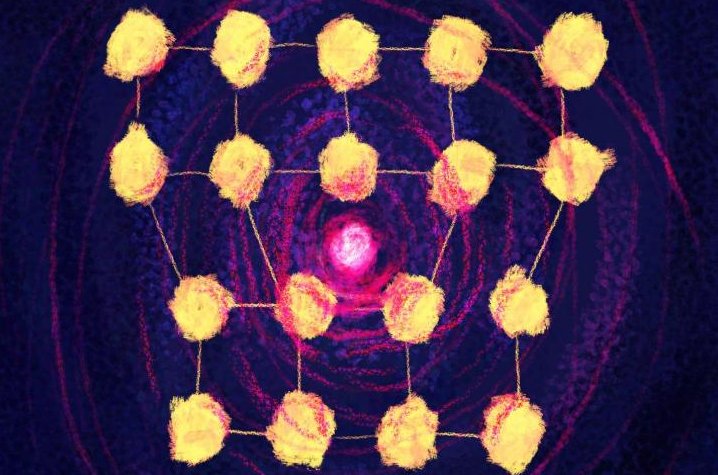An illustration shows a hydrogen atom wedging itself into the dislocation between steel crystals. Photo by University of Sydney
Jan. 9 (UPI) -- Scientists have finally figured out how hydrogen causes embrittlement of steels. The research, conducted by engineers at the University of Sydney, also revealed new strategies for steels resistant to embrittlement.
Many scientists and policy makers remain hopeful that a hydrogen economy -- the use of hydrogen fuel to power cars, trucks, planes and more -- will dramatically curb carbon emissions. But the transition to a hydrogen economy will require infrastructure for hydrogen distribution and storage.
Many of the piping and combustion systems used to burn fuel for today's carbon economy use steel and steel alloys. Unfortunately, hydrogen undermines the structural integrity of steel -- a process called embrittlement.
Until now, scientists weren't sure exactly how steel embrittlement worked.
Using a sophisticated imaging technique called cryo-transfer atom probe tomography, scientists were able to observe the behavior of hydrogen atoms inside steel. The research, published this week in the journal Science, showed hydrogen accumulates inside the dislocations or boundaries separating individual steel crystals. As more and more hydrogen accumulates inside these dislocations, fractures begin to develop, causing embrittlement.
Fortunately, the groundbreaking research also revealed a technique for preventing steel embrittlement. In some steel alloys, images revealed clusters of niobium carbide worked to trap hydrogen atoms and prevent them from moving to and accumulating in dislocations and crystal boundaries.
In the future, researchers could deploy niobium carbide or compounds with similar qualities to develop steels resistant to hydrogen-induced embrittlement.
"These findings are vital for designing embrittlement-resistant steel; the carbides offer a solution to ensuring high-strength steels are not prone to early fracture and reduced toughness in the presence of hydrogen," lead researcher Yi-Sheng Chen said in a news release.















